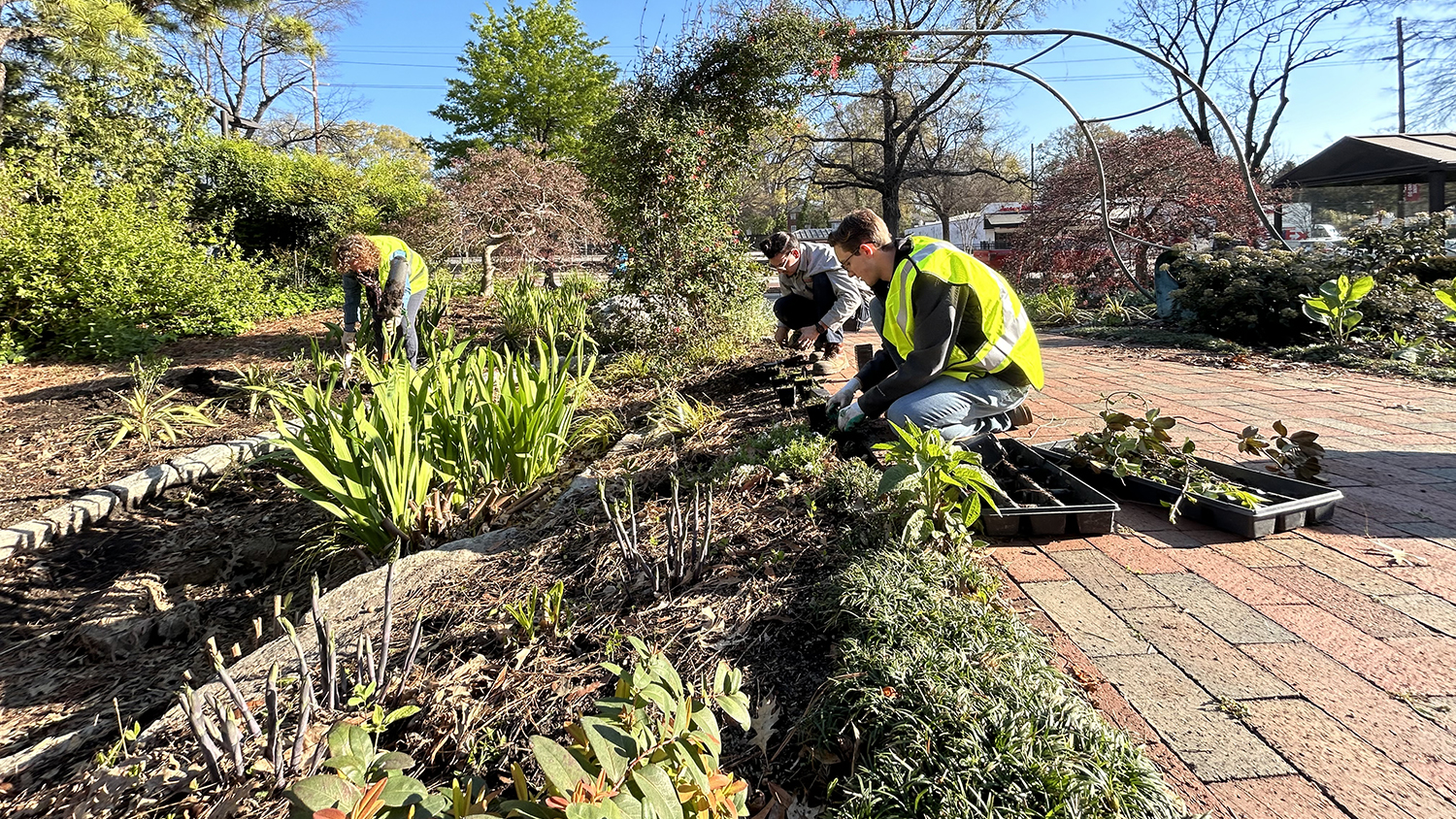CALS alumnus directs the Northeast Regional School of Biotechnology and Agriscience
With six teachers and 58 students (at press time), the Northeast Regional School of Biotechnology and Agriscience may be small, but it’s mighty.
The first of its kind in the state, the new early college high school draws students from five counties in northeastern North Carolina: Beaufort, Martin, Pitt, Tyrrell and Washington. Some students commute nearly four hours a day to be there.
With a focus on STEM (science, technology, engineering and math) education, the school operates in a technology-rich environment in which the teachers are facilitators, not instructors, and the learning is hands-on.
A product of N.C. Senate Bill 125, which gave life to the concept of regional schools when it was passed in 2011, the Northeast Regional School of Biotechnology and Agriscience opened its doors in August 2012.
Principal Hal Davis, who earned bachelor’s and master’s degrees in agricultural education – as well as an advanced certification in agricultural and vocational education – from the College of Agriculture and Life Sciences, says this school is like no other.
“This school is very special for the whole region,” Davis says. “These students have never had an opportunity like this before. The idea is for them to come back here and use what they’ve learned to help this region grow economically.”
One of Davis’ first hires, Julie Gurganus, serves as technology facilitator for the new school.
“We follow the same curriculum as the public school system, but the way we approach it is very different,” Gurganus says. “Our students have lots of hands-on opportunities working with N.C. State researchers, and they have their own tablet computers to use in the classroom and at home every day. It’s exciting to have these resources at hand.”

Located in the Vernon G. James Research and Extension Center in Plymouth, the school shares space with College researchers, as well as employees of N.C. Cooperative Extension and the N.C. Department of Agriculture and Consumer Services.
You won’t see large classrooms with rows of desks here. “We took what was available and made classrooms out of it,” Davis says. The students are grouped together to encourage collaboration, and the class size is typically 12 to 16 students. The teachers are equipped with tablets and wireless LCD projectors so they can walk around the room during instruction.
The students also work with CALS scientists at least once a month on lab and field projects ranging from planting to water sampling.
Every student in the school’s inaugural class had to apply and interview for a slot. There is no tuition, and the only requirement is FFA membership, which Davis describes as an integral part of the school culture.
“We have a very diverse student body, in terms of race, gender, social status and academic levels,” Davis says. “We didn’t just take the academic high-flyers.
“One of the emphases of our school is to serve first-generation college families,” he says. “A lot of kids told me during interviews that they needed this school to give themselves another chance. Our kids want to be successful, and they see something here that they can grasp onto.”
The school is designed to accelerate learning so that students complete high school graduation requirements after about three and a half years, Davis says. For the remaining year and a half, the students take online courses to earn college credit and participate in internships and apprenticeships.
“I thought that a five-year program would be a deal breaker for a lot of our kids and parents, but it’s not,” Davis says. “In fact, it’s quite appealing to them.”
The school operates on a 200-day calendar, unlike the traditional 180-day school calendar, which allows time for “satellite days,” in which the teachers travel to local community colleges and Extension centers to deliver instruction in the students’ home counties. The entire school also travels for field trips throughout North Carolina, from the Shakespeare Festival in High Point to the Coast Guard air station in Elizabeth City.
All of the students also participated in the eight-week online course “College Transfer Success” through Pamlico Community College, and a number of students took classes online through N.C. Virtual Public School.
Math teacher Tracie Asby says the school’s philosophy for instruction promotes critical thinking, not memorization.

“There’s a lot of investigation, problem-solving and real-world application,” Asby says. “The students make discoveries through hands-on work, so they have a deeper knowledge of the material.”
As a new academic year approaches, Davis says he looks forward to welcoming another class of 60 students and a handful of new teachers. The school also will expand to include an “east campus” at a technology center just down the road, which will house the new freshman class.
He describes the first year as a “coming together of ideas” and says none of it would be possible without the support of the community and a strong corps of parent volunteers.
“When I came to work here, there were no students, no teachers, nothing,” Davis says. “We’re inventing this as we go.”
He cites a number of outside partners in the effort, including N.C. State, the N.C. Department of Public Instruction, the N.C. New Schools Project, the N.C. Department of Agriculture and Consumer Services, the State Board of Education, the five partner school districts, Pamlico Community College, the North Carolina Biotechnology Center, the JOBS Commission, Golden LEAF and the Carnegie Foundation. A 12-member board of directors representing education, industry and government also provides leadership.
“Our school has the potential to boost northeastern North Carolina,” Davis says. “We hope it will be a model for other schools across the state.”
— Suzanne Stanard


